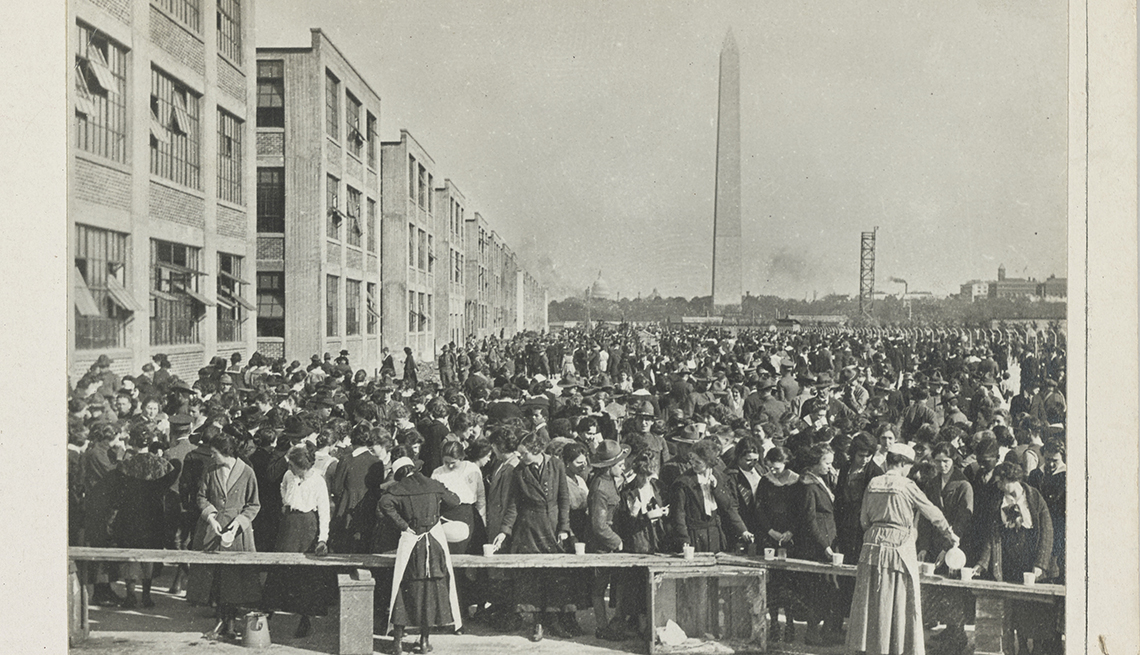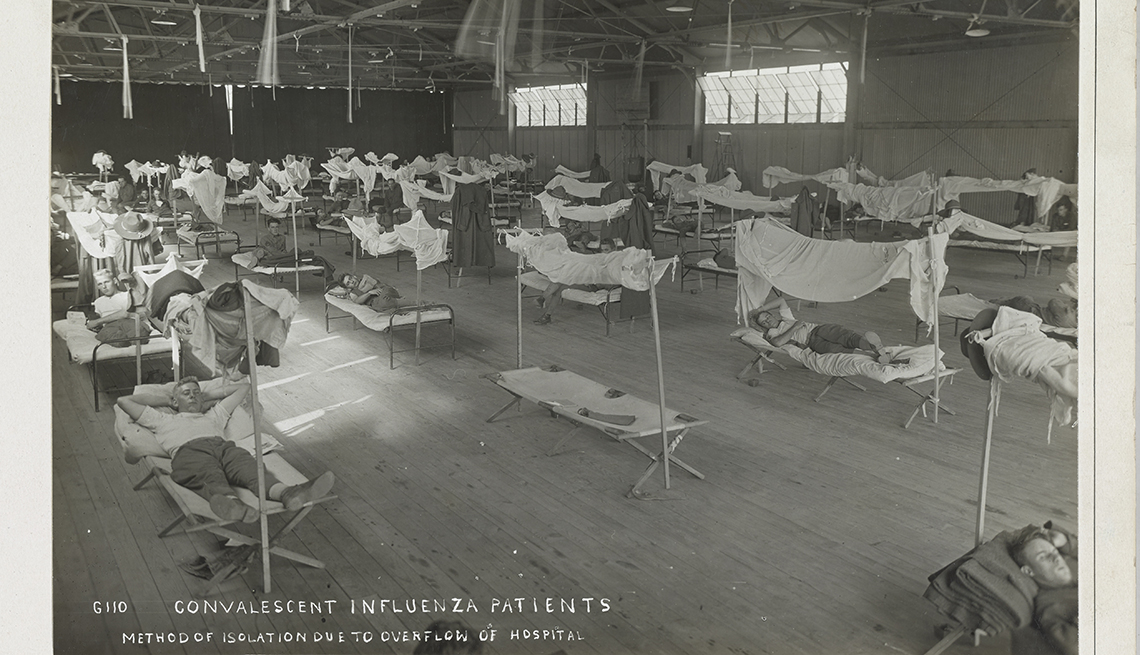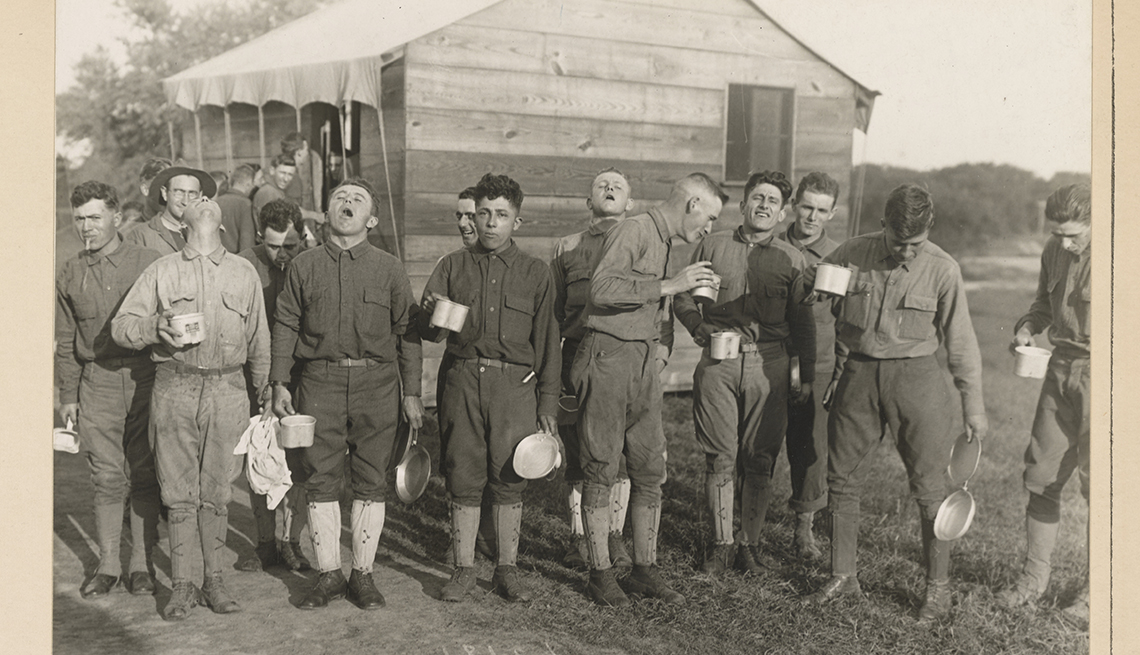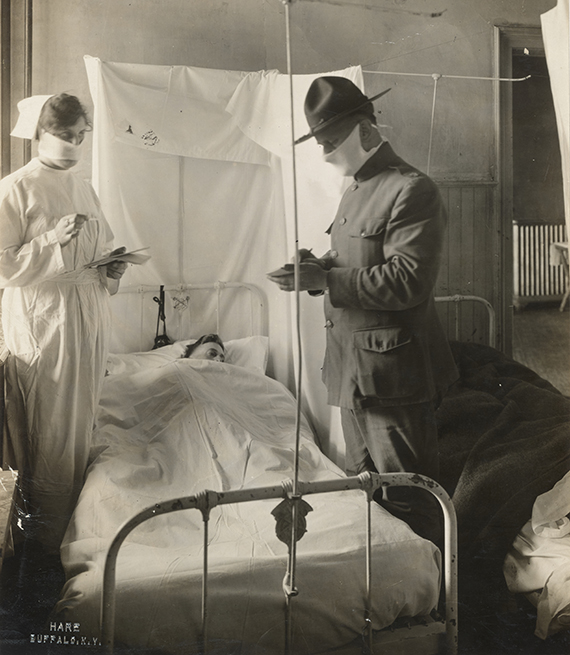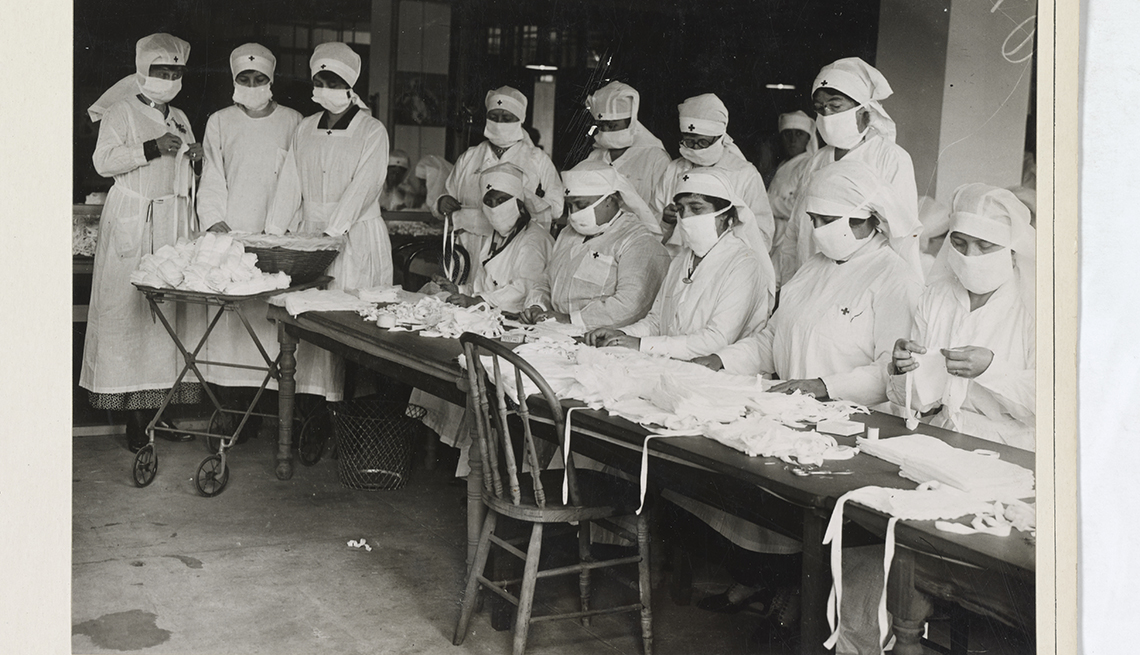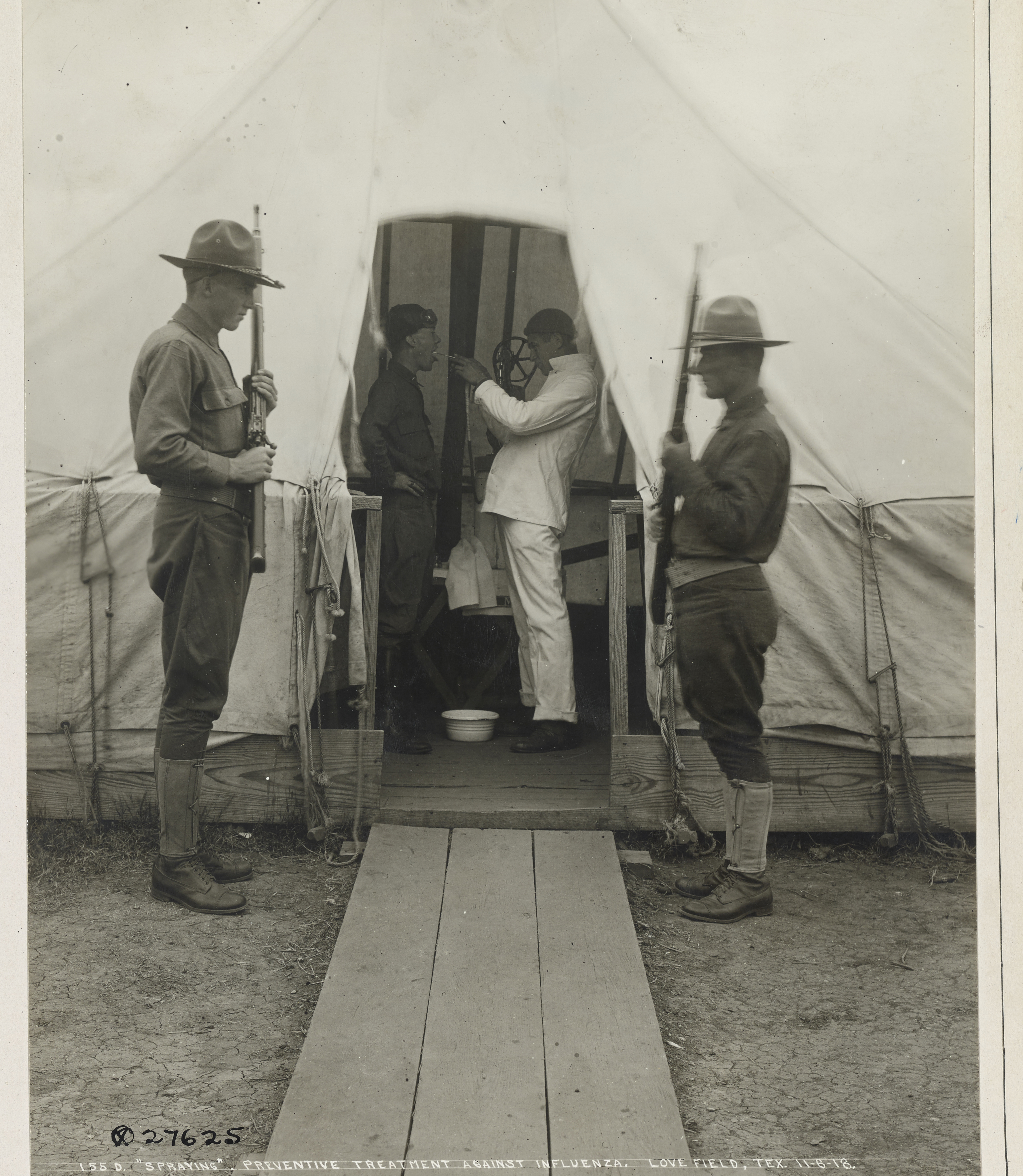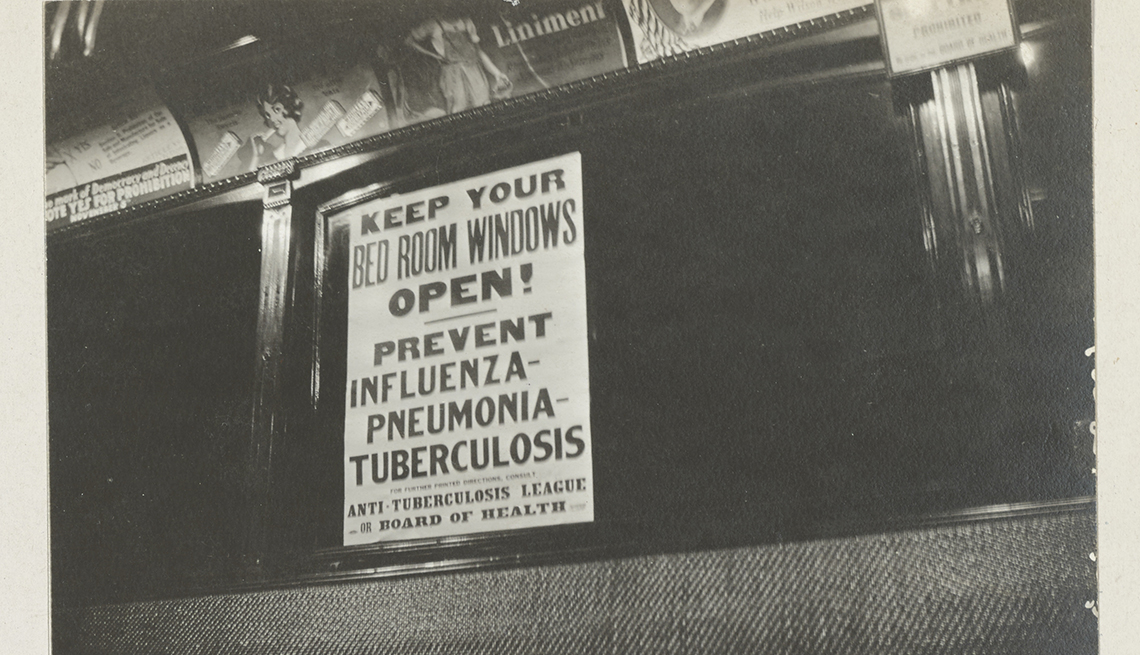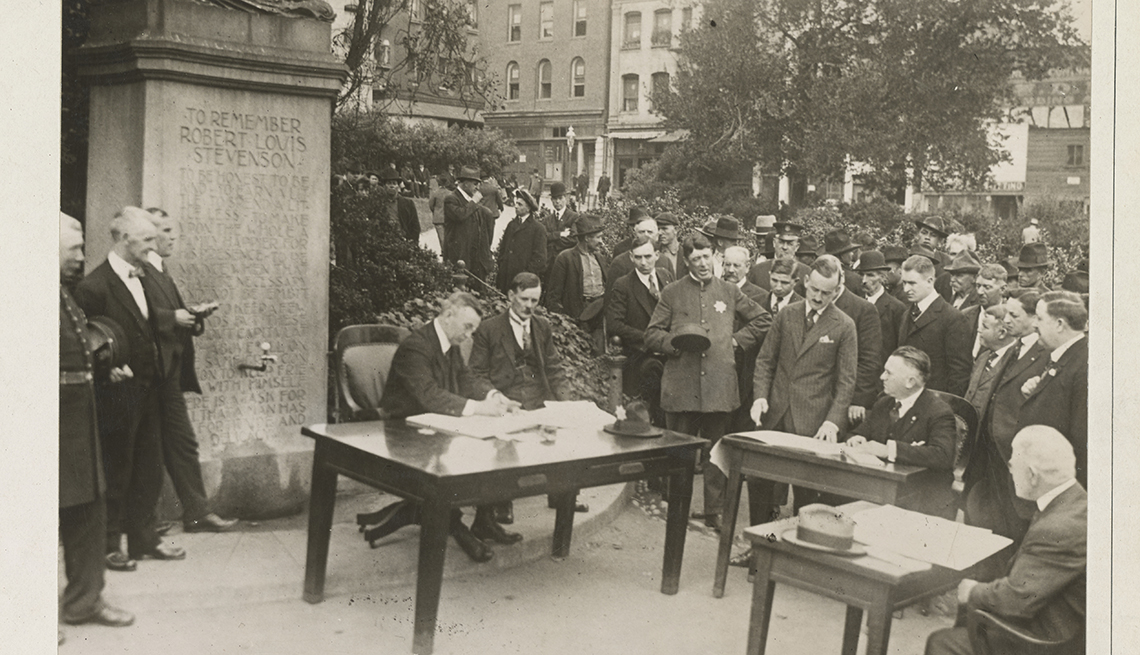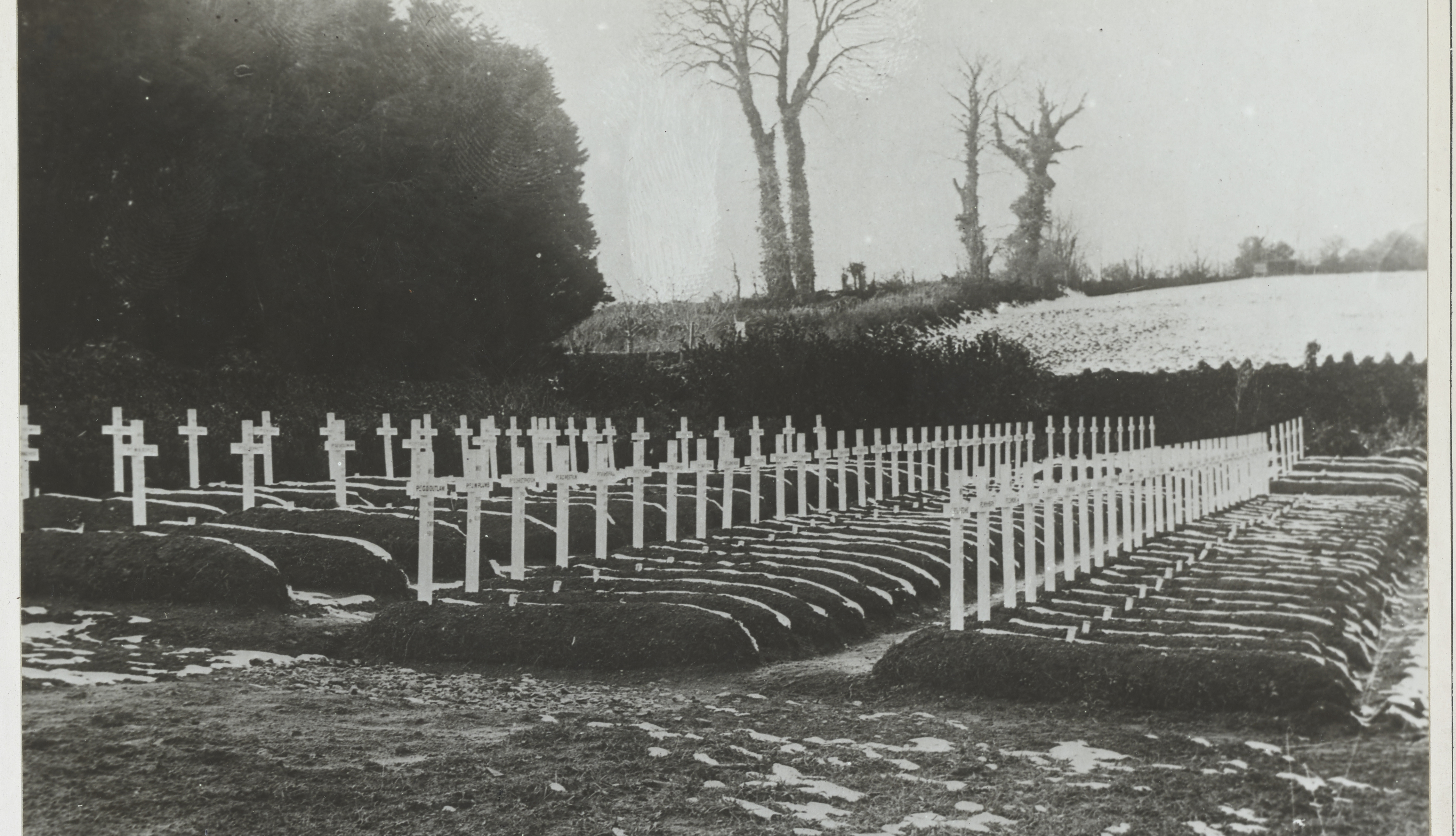Spanish Flu: How America Fought a Pandemic a Century Ago
Science and medicine have come a long way since the 1918 outbreak
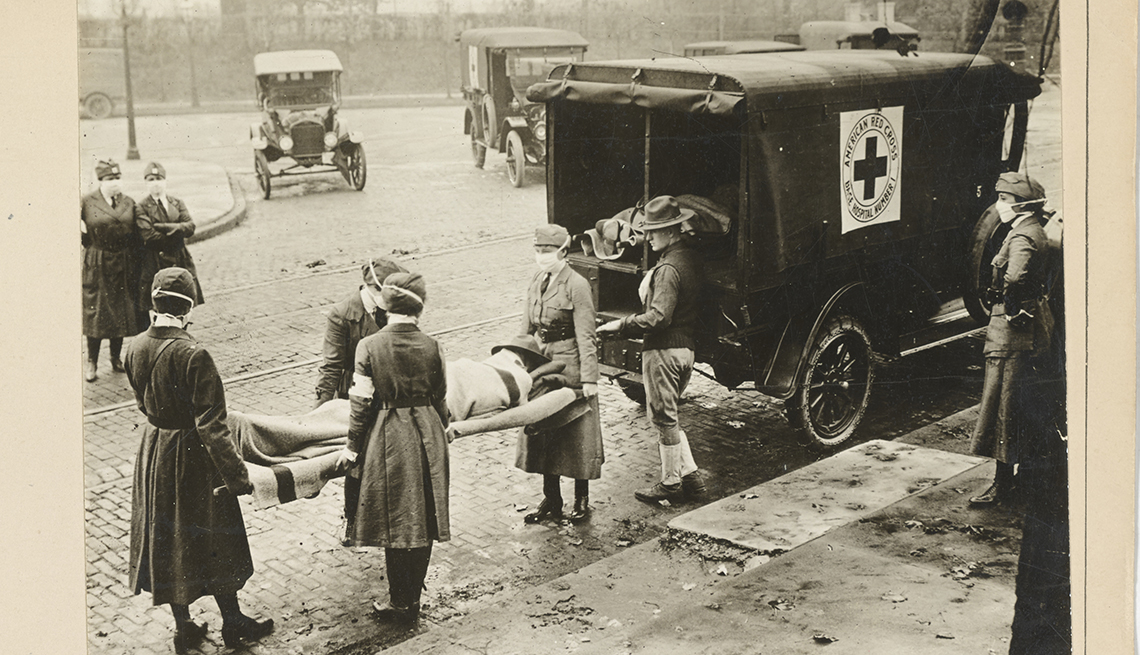
National Archives
Nurses carry a patient in St. Louis, Missouri, during the Spanish Flu pandemic in 1918.
En español | Before scientists identified the influenza virus in 1933, the medical community had far less knowledge of how the flu passed from person to person and how to treat those infected. In 1918, as the world was nearing the end of the first world war, what became known as the Spanish flu was spreading rapidly among the soldiers who lived in close quarters. Some erroneously attributed the deadly pandemic that ultimately claimed an estimated 50 million to 100 million lives around the globe to everything from volcanic eruptions to bad Russian oats, according to Jeremy Brown, author of Influenza: The 100-Year Hunt to Cure the Deadliest Disease in History.
Many countries censored news reports during World War I, especially information about the pandemic. Since Spain remained a neutral country, its press was free to report on the outbreak's relentless spread, leading to the name Spanish flu. Scientists are split over where the virus originated, with three possibilities being Kansas, France and China.
The Spanish flu killed about 675,000 people in the U.S. In September 2021, 18 months after the start of the coronavirus pandemic, American deaths attributed to COVID-19 hit 676,000, surpassing the toll of the influenza pandemic of 1918. Here are historical photos from the National Archives that show just how hard the Spanish flu hit America — and how Americans tried to avoid it, treat it and live with it.
AARP Membership -Join AARP for just $12 for your first year when you enroll in automatic renewal
Join today and save 25% off the standard annual rate. Get instant access to discounts, programs, services, and the information you need to benefit every area of your life.
- |
- Photos
Editor's note: This story was updated with the latest numbers on COVID-19.


